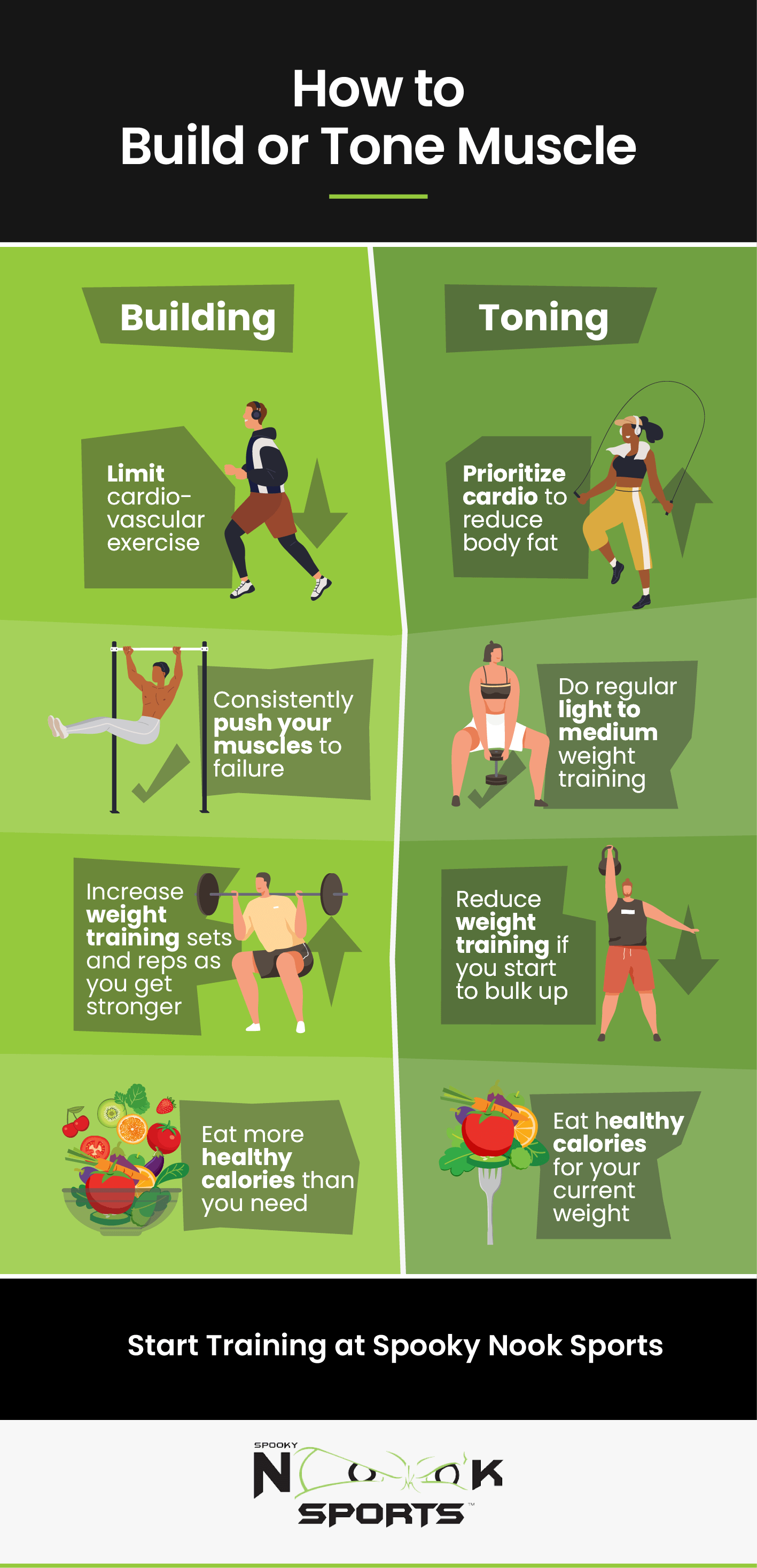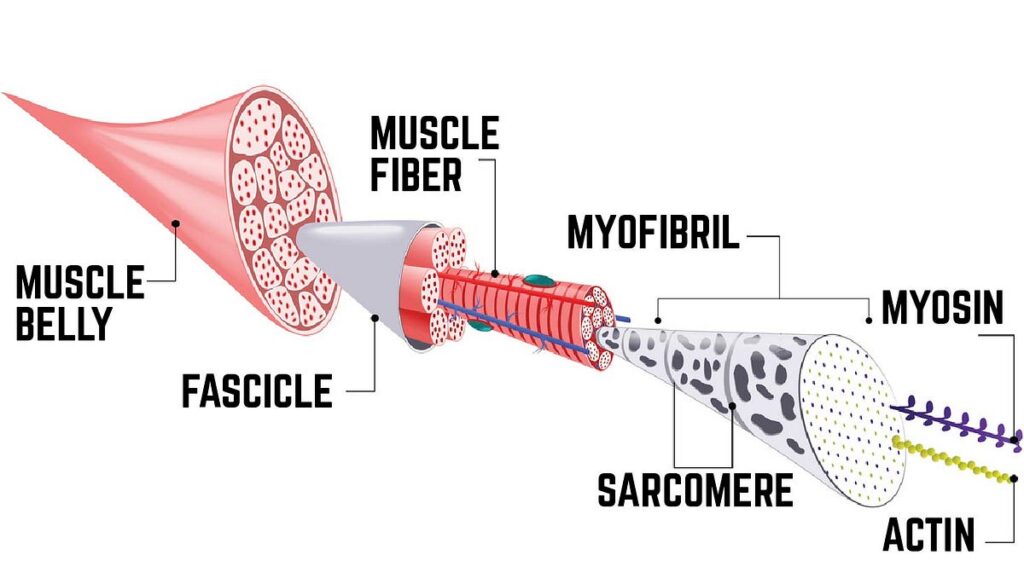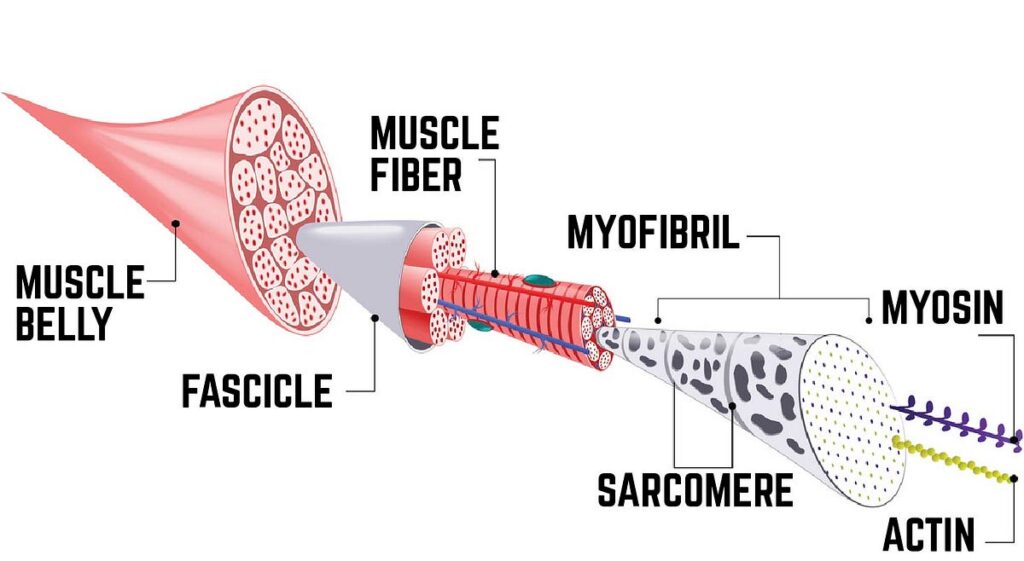Muscle growth, or hypertrophy, refers to the increase in muscle mass through the enlargement of muscle fibers. It occurs due to consistent resistance training and adequate nutrition.
Muscle growth is a fundamental goal for many fitness enthusiasts. It involves the enlargement of muscle fibers, achieved through resistance training and proper nutrition. The process is essential for enhancing strength, improving physical appearance, and boosting overall health. Regular exercise, combined with a balanced diet rich in proteins, is crucial for effective muscle growth.
Rest and recovery also play a significant role, allowing muscles to repair and grow stronger. Understanding the basics of muscle growth can help individuals develop more effective workout routines and achieve their fitness goals more efficiently.
Introduction To Muscle Growth
Muscle growth happens when muscle fibers get bigger. This process is called hypertrophy. Exercise, especially weight training, helps muscles grow. Muscles need rest to grow properly. Eating enough protein also supports muscle growth.
Muscle growth starts with tiny tears in muscle fibers. These tears happen during exercise. The body repairs these tears, making muscles stronger and bigger. This process is natural and healthy.
Growing muscles helps improve strength and endurance. Stronger muscles can make daily activities easier. Muscle growth also supports a healthy metabolism. Muscles burn more calories than fat, even at rest.
Biological Mechanisms
Hypertrophy is the increase in muscle size. This happens when muscle fibers get larger. Regular exercise helps in muscle hypertrophy. Strength training is key for this process. Muscles adapt to the stress from lifting weights. They grow stronger and bigger over time. Protein intake also supports hypertrophy. Muscles need protein to repair and grow.
Hyperplasia refers to the increase in the number of muscle fibers. This is different from hypertrophy. It is less common in humans but possible. Scientists still study hyperplasia to understand it better. Some believe it happens through intense training. Others think it might need specific conditions. Hyperplasia may contribute to overall muscle growth. Combining both mechanisms can lead to optimal muscle development.
Muscle Fiber Types
Slow-twitch fibers are great for endurance activities. They contract slowly and use oxygen efficiently. These fibers help you run long distances without getting tired. Slow-twitch fibers are rich in mitochondria, the powerhouses of cells. This makes them good for activities like marathons and long swims.
Fast-twitch fibers are perfect for quick bursts of energy. They contract quickly and tire out fast. These fibers are used in sprinting and weightlifting. Fast-twitch fibers are less efficient in using oxygen. They rely more on stored energy for quick actions. This makes them ideal for short, intense activities.

Credit: www.medicalnewstoday.com
Role Of Nutrition
Protein is very important for muscle growth. Muscles need protein to repair and grow. Eating enough protein helps muscles get stronger. Foods like chicken, fish, and beans are good sources. Protein shakes can also help. Aim for a balanced diet with enough protein every day.
Vitamins and minerals are also important. They help the body use the protein. Iron, zinc, and magnesium are key minerals. Vitamins like B12 and D support muscle health. Eat a variety of foods to get these nutrients. Fruits and vegetables are good sources.
Effective Training Methods
Resistance training helps build muscle strength. Lifting weights is a common method. Resistance bands are also effective. Muscles grow when they are challenged. Training consistently is key. Use different exercises for best results. Focus on both upper and lower body. Proper form prevents injuries. Increase weight gradually. Rest between workouts is important.
High-Intensity Interval Training (HIIT) boosts muscle growth. It includes short bursts of intense exercise. Short rest periods follow each burst. This method burns fat while building muscle. HIIT can be done with bodyweight exercises. Jumping jacks and burpees are examples. It improves overall fitness quickly. Sessions are usually 20-30 minutes long. Start slow and increase intensity.
Recovery And Rest
Sleep is crucial for muscle growth. During sleep, the body repairs muscle tissues. This helps muscles grow stronger. Aim for at least 8 hours of sleep every night. Poor sleep can slow down muscle recovery. Use a comfortable bed and a quiet room for better sleep. Avoid caffeine before bedtime. Try to maintain a regular sleep schedule. This helps your body get used to sleeping and waking up at the same times.
Active recovery involves light exercise. Activities like walking or gentle yoga can help. They increase blood flow to the muscles. This helps with muscle repair. Active recovery can reduce muscle soreness. It also helps to keep you flexible. Aim for active recovery days after intense workouts. This keeps your muscles engaged without straining them. Always listen to your body and don’t overdo it.
Common Myths
Spot reduction is the idea that you can lose fat in one specific area. This is a myth. The body loses fat in a general way, not just from one spot. Doing many sit-ups will not only burn belly fat. A balanced diet and overall exercise are key.
Many believe that pain means a workout is effective. This is not true. Muscle growth can happen without extreme pain. Overworking muscles can lead to injuries. Listening to your body is important. Rest and recovery are part of muscle growth. Consistency is more important than pushing too hard.

Credit: www.biologyonline.com
Tracking Progress
Keep track of your lifting weights. Write down how much you lift each time. Increase weights slowly over time. This shows muscle growth. Count repetitions and sets. Try to do more each week. If you can lift more, you are getting stronger.
Use a body fat scale to measure fat and muscle. These scales show body fat percentage. Less fat and more muscle means progress. Take pictures of your body. Compare them every month. Notice changes in muscle size and shape.
Practical Tips
Regular exercise is key to muscle growth. Skipping workouts slows down progress. Stick to your routine every week. Track your workouts and improve over time. This helps you stay on track and see results. Consistency builds strong and healthy muscles. It also helps in achieving long-term goals. Make a workout plan and follow it strictly.
Focus on the muscle you’re working on. Feel the muscle contract and stretch. This improves the effectiveness of your exercises. Mind-muscle connection helps in better engagement. It also reduces the risk of injury. Practice this during every workout session. Quality is more important than quantity. Pay attention to form and technique.

Credit: www.spookynooksports.com
Frequently Asked Questions
What Is Muscle Growth?
Muscle growth, or hypertrophy, is the increase in muscle mass due to exercise. It involves muscle fiber enlargement and increased protein synthesis. Consistent resistance training and proper nutrition are key.
How Does Muscle Growth Occur?
Muscle growth occurs through resistance training and proper nutrition. Exercise causes microscopic tears in muscle fibers. The body repairs these fibers, leading to increased muscle size and strength.
What Factors Affect Muscle Growth?
Several factors affect muscle growth: genetics, diet, exercise routine, and recovery. Proper protein intake and rest are essential. Consistent training and progressive overload are also crucial for optimal growth.
How Long Does Muscle Growth Take?
Muscle growth varies per individual. Beginners might see changes in 4-6 weeks. Consistency in training and nutrition is essential for long-term results.
Conclusion
Understanding muscle growth is crucial for anyone aiming to improve their fitness. It involves muscle fiber damage, repair, and adaptation. Proper nutrition, consistent exercise, and adequate rest are essential. By focusing on these elements, you can achieve significant muscle growth and strength gains over time.
Commit to your routine for the best results.










